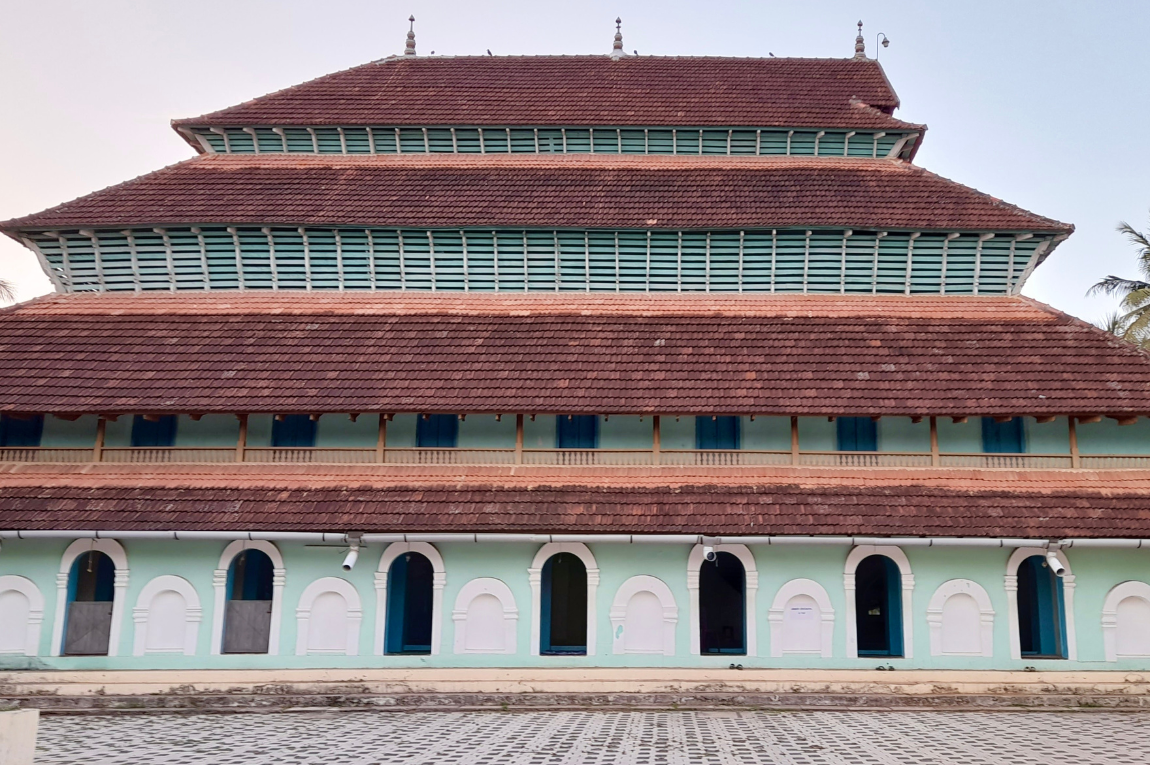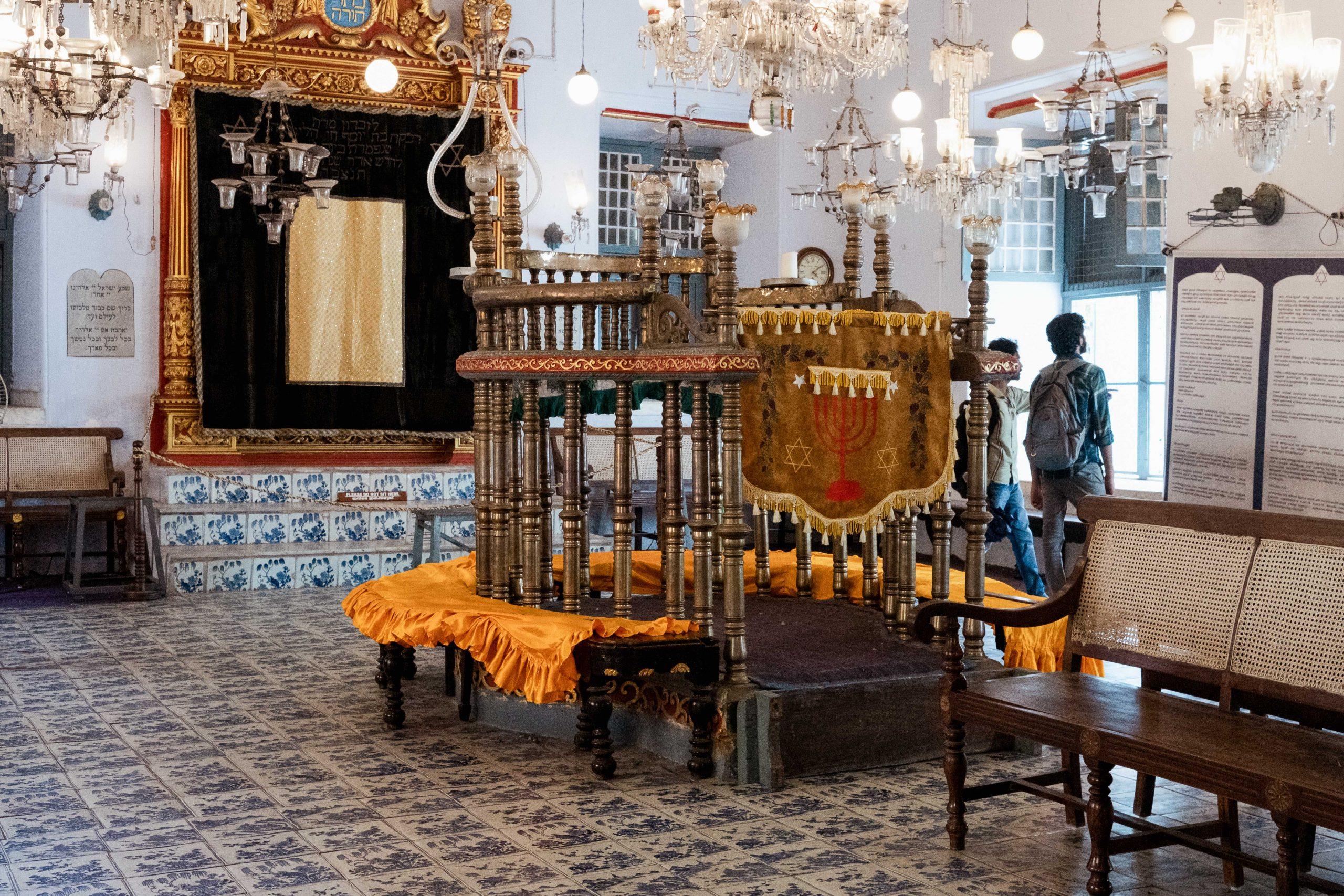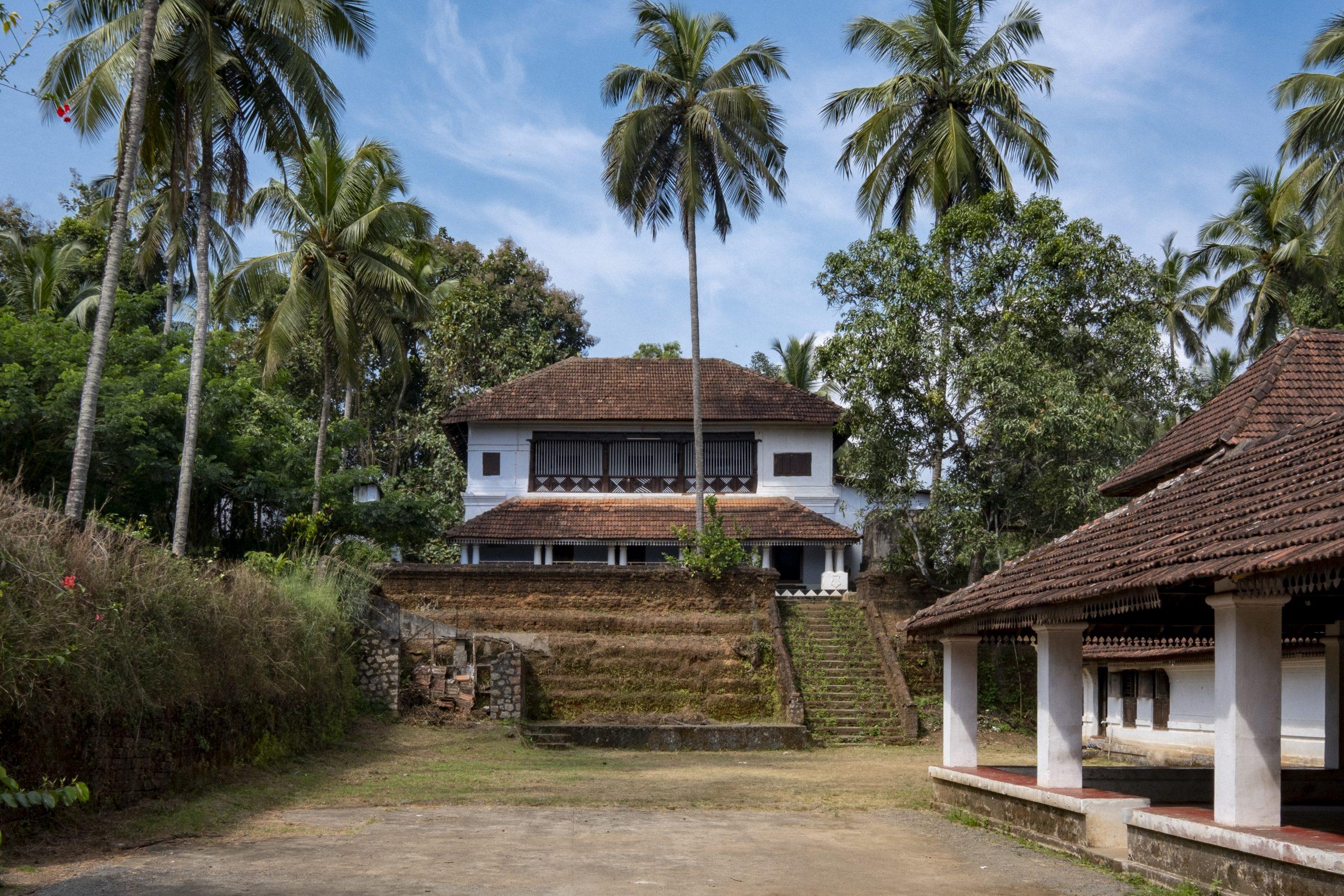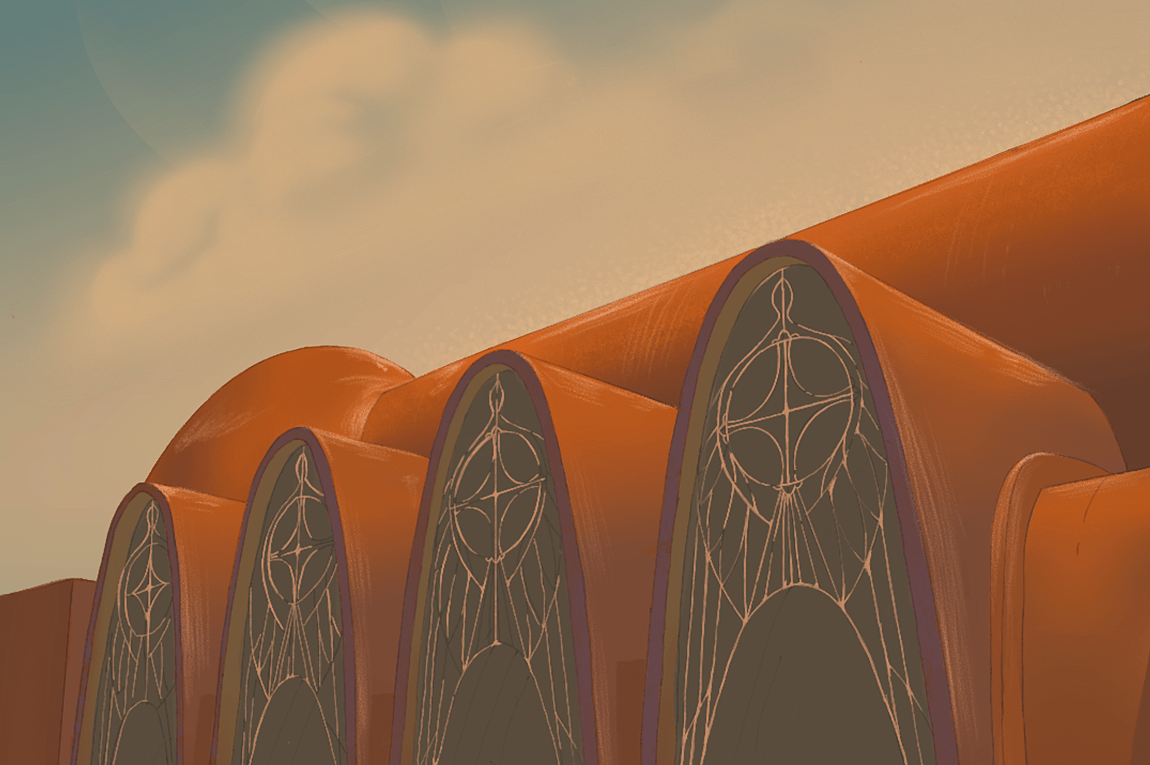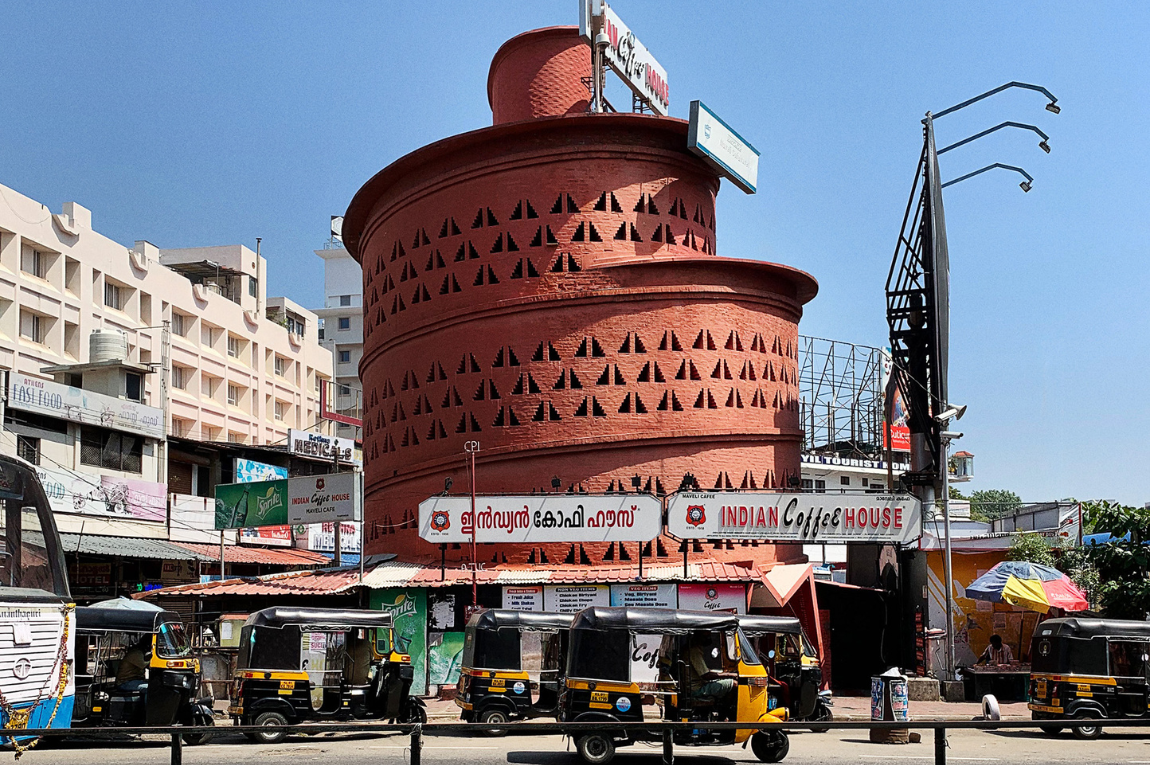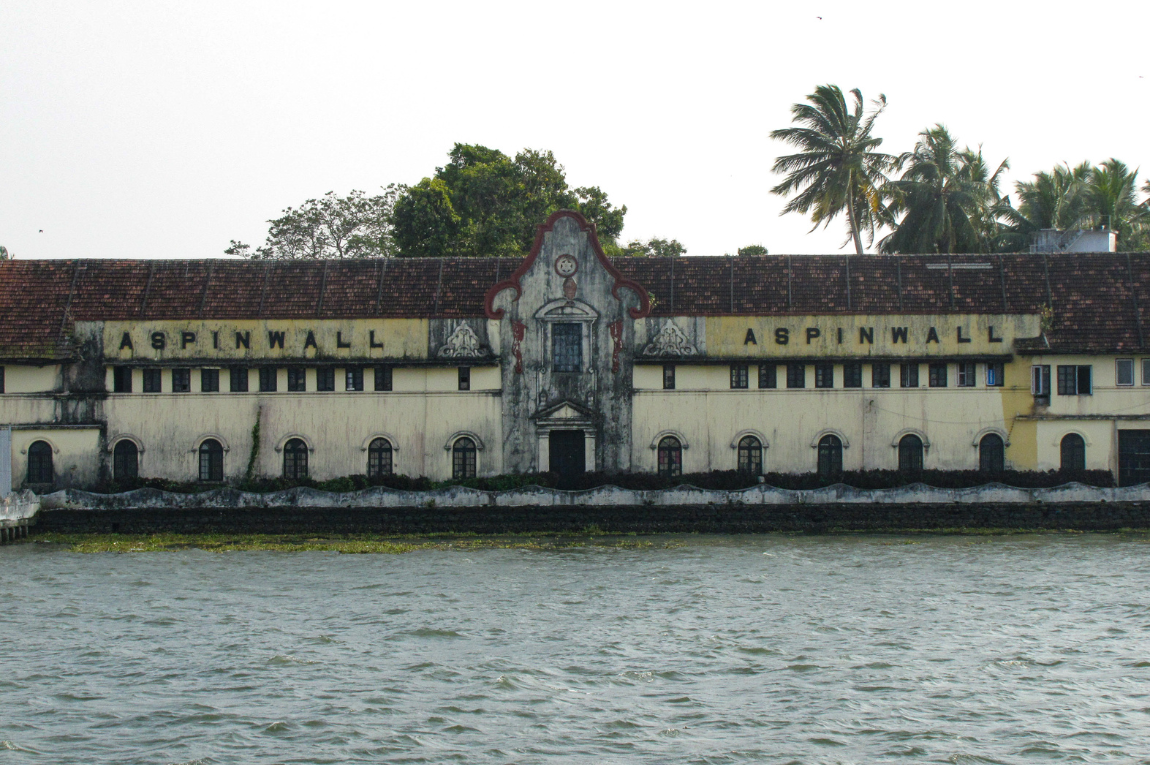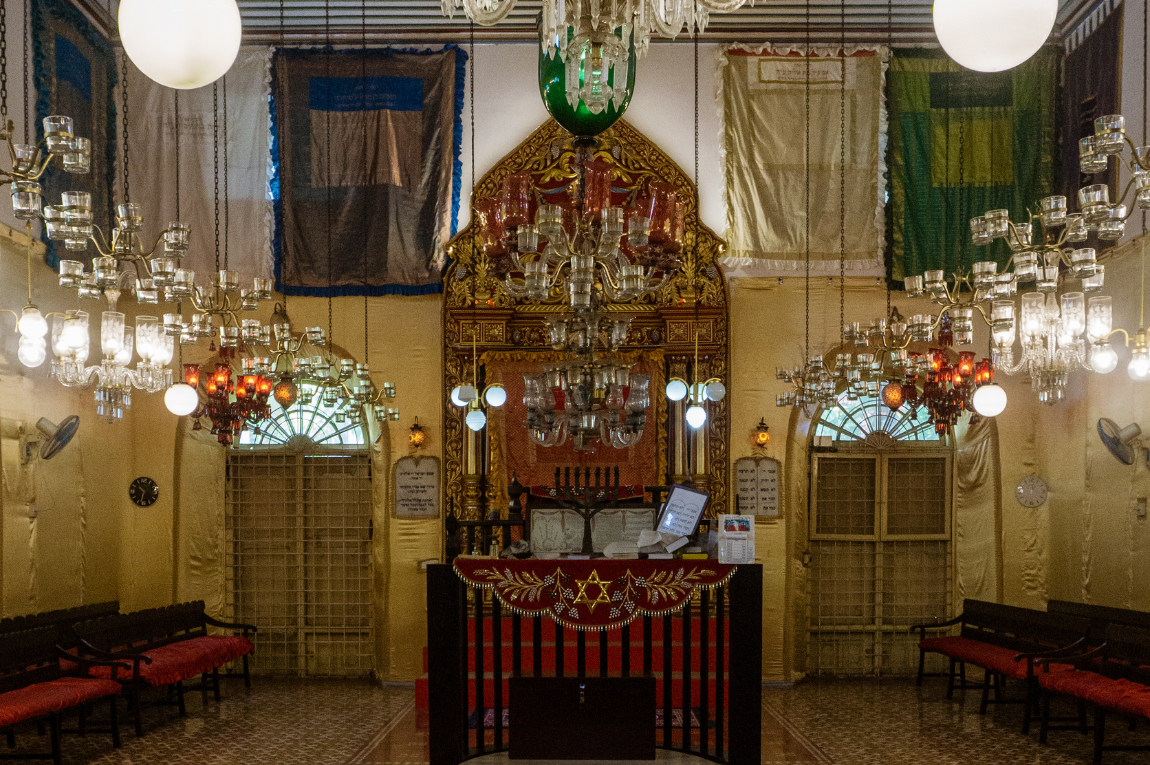My mother was partly raised in Calicut (now officially known as Kozhikode). As a Malayali child growing up in the international melting pot of New York City, I would hear stories of her childhood memories, of how the society and customs of Kerala brought together people from different religions. She’d tell us about playing with friends who were Muslim and how they partook in each other’s celebrations during festivals. When I visit Kerala now, I can see the kind of integration, across religions and cultures, that she was talking about — especially in the architecture.
During Ramzan, in the summer of 2022, I was in Calicut to research its fascinating history, and I found myself in the quaint and historical quarter of Kuttichira, a place known for its mosques that look more like Hindu temples than what someone would typically associate with a Muslim house of worship. Right next to Kuttichira Tank — which resembles any temple pond — I saw the enormous medieval Mishkal Mosque.
Originally built in the 1340s by Nakhooda Mishkal, a wealthy merchant and shipowner from Yemen, the mosque is a fine example of Islam integrating into Kerala’s culture. During this time, Calicut was a booming centre of trade, especially with Arabs, and it was through this trade of spices — as well as ideas — that Islam is said to have reached the Indian subcontinent.
The architecture of Mishkal Mosque is a reflection of this interaction. From the widespread use of timber in the construction of this four-storeyed structure to the tiered roof that is the hallmark of Hindu temples in the state, the architecture reflects the ancient carpentry principles of thachu shastra, which were followed by local architects and carpenters over centuries. Unlike many medieval religious structures that have undergone various degrees of expansion and reconstruction, the Mishkal Mosque was constructed in one go. Unfortunately, it was partly destroyed by Portuguese naval artillery fire in the 16th century, but was subsequently restored using the remains from a destroyed Portuguese fort.
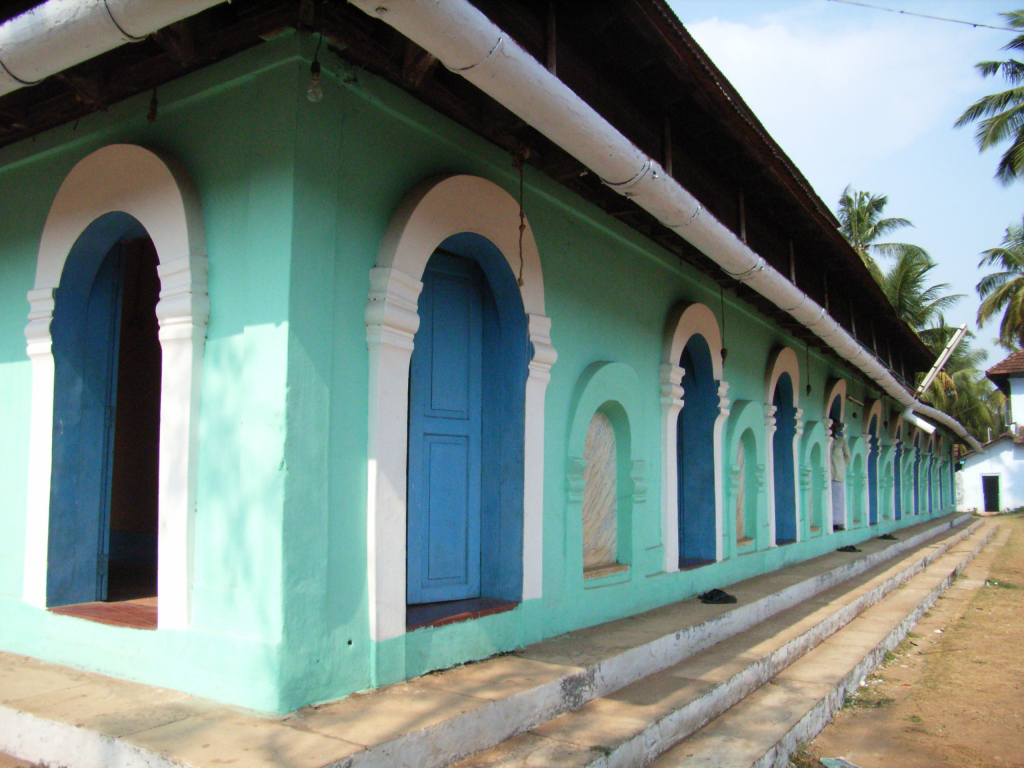
By the time I entered the compound of the Mishkal Mosque that day, the scorching heat had given way to a rather pleasant evening. Unlike more familiar mosques, there were no minarets or cupolas here, but instead, a strong influence of traditional Keralan architecture. It is an impressive structure that’s largely built from timber and laterite stone (with mud plaster), and that also accounts for the region’s hot, tropical climate with its accommodations for ample ventilation and natural light. The gable windows, for instance, provide access to views, and the louvres along the upper floors reduce the glare from the often-unforgiving Calicut afternoon sun. Based on my research, I also knew to look for the roof framing on the fourth level, where a single timber drum holds the rafters in place. The compound has Italian tiles, and the structure is also supported by twenty-four carved pillars.
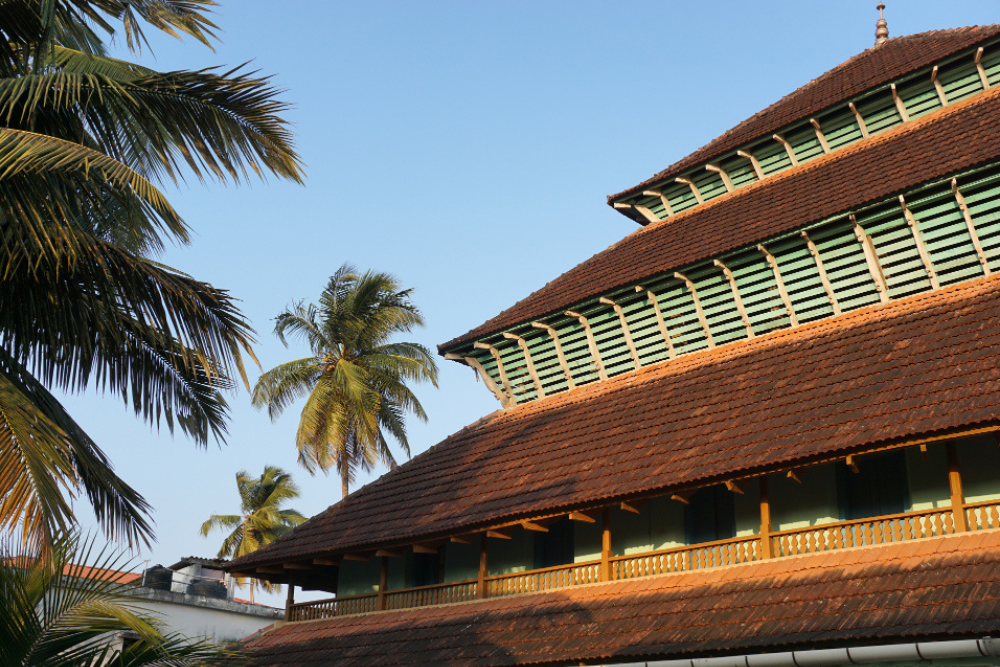
The sun was soon to set, and as I was standing in the compound admiring the mosque’s architecture, a man in his 70s approached me and asked where I was from. When I mentioned Mumbai, he invited me inside to join him and others as they broke their fast.
As I sat cross-legged on the floor awaiting the call to break the fast, I had a chance to soak in the impressive interiors and fully appreciate the thought process and planning behind the structure. I saw the elaborate roof structure with its layers of columns and cross-beams. The smell of timber reminded me of older Hindu temples, and I did notice a brass oil lamp, the mainstay of any temple in Kerala. The Mishkal Mosque is, without a doubt, one of the finest examples of Kerala’s inclusive and syncretic culture.
A note for visitors: The compound of the Mishkal Mosque is open to everyone — but only men are allowed inside.
Find your way to the Mishkal Mosque in Calicut, Kerala via Google Maps here.
Our selection of stays across India, best visited for their design and style. Check in
Ajay Kamalakaran is a writer and independent journalist, primarily based in Mumbai. He is on Instagram at @ajaykamalakaran.
